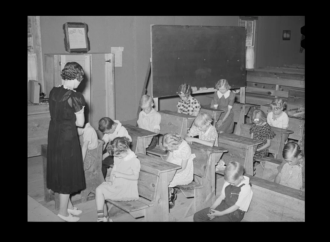People often claim that differences in outcomes between two racial or ethnic groups are proof of discrimination. For example, Jews account for just 0.2 percent of the world’s population, but they make up over 20 percent of all Nobel Prize laureates. Clearly, the argument goes, there must be some conspiracy afoot.
The same line of thinking often animates debates about race in America. For example, Human Rights Watch, one of the world’s leading non-governmental organizations, argues that because the incarceration rate is higher for black and Hispanic Americans than for white Americans, there must be discrimination against these minority groups. In essence, the claim boils down to the assertion that differences in outcome imply discrimination.
It would be impossible to deny that this position has a certain intuitive appeal to it. Perhaps that’s why one of the greatest living economists, Dr. Thomas Sowell, spent years of his life researching different cultures around the world to see if it holds true. His findings are thought-provoking, controversial, and definitive.
Sowell starts by flipping the claim on its head: If differences in outcome imply discrimination, then a world without discrimination would be a world with equal outcomes. In other words, only 0.2 percent of Nobel laureates would be Jews, and black, Hispanic, and white Americans would be incarcerated at the same rates. Sowell asks in his book Black Rednecks & White Liberals, is there any evidence that should persuade us to expect that different groups of people will achieve the same outcomes?
To find his answer, Sowell looks at the way that minority groups operate around the world. After studying the Chinese in Southeast Asia, the Lebanese in West Africa, the Jews in the United States, the Germans in Central and Eastern Europe, the Armenians in Russia, and the Gujaratis in India, his conclusion is simple: There is no society on earth where members of different cultural and ethnic groups have the same outcomes.
For example, in the 1700s, 209 out of 250 cotton cloth factories in the Russian province of Astrakhan were owned by Armenians. Today, the Chinese control about 70 percent of Indonesia’s private domestic capital, despite composing only about 5 percent of the population. Similarly, in the late 1800s, Jews owned 80 percent of all of New York City’s retail clothing stores.
Is it discrimination that allowed the Armenians to dominate the cotton business in Astrakhan? What about the Jewish dominance of New York City’s clothing sector? Clearly, something else must be afoot.
By doing the difficult research needed to compile a global view of inter-group differences, Sowell shows that we should never expect people from distinct cultures to act in the same way. It is disparity, not equality, that characterizes the human experience.
What does this global perspective tell us about the differences between people from different cultures within the United States? In a way, very little—it doesn’t answer any of the important questions about how Jews have cultivated the skills needed to win Nobels, for example. Rather than giving us a conclusion that can be easily applied to any domestic controversy, Sowell helps us develop realistic expectations.
Given the data about inter-group differences, we should never expect people from different backgrounds to have the same outcomes. When they do in fact behave differently, we should not be surprised. Instead, we should be curious.
Over the course of his career, Sowell has written over 45 books on topics ranging from knowledge and decisions to children who speak later than their peers. His life is a testament to what a determined person can do when they refuse to take things at face value.
—
Image credit: Unsplash
















Leave a Comment
Your email address will not be published. Required fields are marked with *